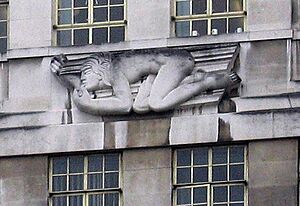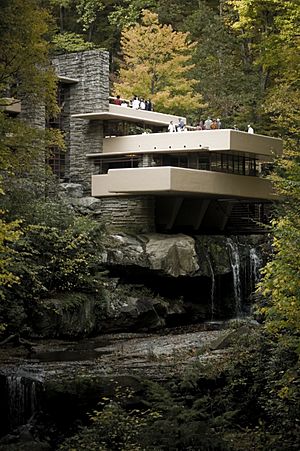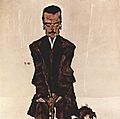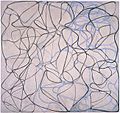Modernism facts for kids



Modernism was a huge cultural movement that happened from the late 1800s to the middle of the 1900s. It completely changed how people thought about art, literature, music, architecture, and drama.
Modernism was all about saying "no" to old traditions. People wanted to find new and different ways to do things. They also believed that science and technology could make the world much better. The ideas within Modernism were very diverse, and some even seemed to disagree with each other.
Contents
Modern Art: New Ways to Create
Modern art took the place of older, more traditional art styles. It included many exciting new movements like abstract art, cubism, pop art, minimalism, and Dadaism.
Famous Modern Artists
Modernism had a big impact on sculpture. Early sculptors like Rodin and Epstein created both traditional and modernist works. Henry Moore is one of the most well-known modernist sculptors.
Some of the most famous modernist painters were Picasso, Braque, Matisse, Kandinsky, and Mondrian. They all explored new ways to express themselves through painting.
Modern Music: Sounds of Change
Many composers are known for their modernist music. These include Stravinsky, George Antheil, and Schoenberg.
Stravinsky's piece, The Rite of Spring (which means Le Sacre du Printemps), was a very important work. It really showed how music was changing.
Modern Dance: Breaking Free
Ballets like The Rite of Spring and Les Noces (meaning The Wedding) brought modern ideas into traditional dance.
Outside of ballet, modern dance began with amazing dancers like Isadora Duncan, Loie Fuller, and Ruth St. Denis. They moved in completely new ways.
Modern Literature: Stories Reimagined
James Joyce's book Ulysses is a perfect example of modernism in novels. Many people say Ulysses (published in 1922) showed everything the Modernist movement was about.
Other great examples include Franz Kafka's The Metamorphosis (1915) and The Trial (1925). Also, T.S. Eliot's poem The Waste Land (1922) is a key modernist work. Looking back, it's clear that Fyodor Dostoyevsky's Crime and Punishment (1866) also influenced many writers.
The idea of magic realism also became part of modernism. This is where magical things happen in a realistic world. Novels by Mikhail Bulgakov, like Diabolidad and The Master and Margarita, are good examples.
Modern Architecture: Buildings for a New Age
Modernism in architecture can be seen in the buildings designed by Frank Lloyd Wright, Le Corbusier, Walter Gropius (who started Bauhaus), and Mies van der Rohe.
Le Corbusier famously said, "A building is a machine for living in." This shows how different his ideas were from architects of the 1800s. The skyscraper became a classic modernist building. A great example is Mies van der Rohe's Seagram Building in New York (built 1956–1958).
Why Some People Criticized Modernism
Some people criticized the modern movement. They felt it didn't value tradition enough. They thought modernists changed things just for the sake of change.
What modernists wanted most was freedom to express themselves. They also wanted freedom to experiment. This is why many modern paintings don't look exactly like real things. In modernist literature, authors might leave out clear plots, stories, or character descriptions.
Ideas Behind the Experiments
These experiments were not random. They were based on the big ideas of their time. These included mass media, new science and technology, Marxism, and Freudian psychology.
Modernists were always looking for new materials, new methods, and new ideas. They often rejected the idea of elitism (where only a few people are important). Instead, they loved populism and popular culture.
Another criticism was about the connection between modernism and socialism. Many modern artists and thinkers were also socialists. In the early days of socialism, it seemed to offer hope for a new future. This future would be free from the problems of the past. This also helps explain why they rejected old traditions.
Images for kids
-
Frank Lloyd Wright, Solomon Guggenheim Museum completed in 1959.
-
A Realist portrait of Otto von Bismarck. Modernists often rejected this style of realism.
-
Palais Stoclet (1905-1911) by modernist architect Josef Hoffmann.
-
Pablo Picasso, Portrait of Daniel-Henry Kahnweiler, 1910, Art Institute of Chicago.
-
Piet Mondrian, View from the Dunes with Beach and Piers, Domburg, 1909, oil and pencil on cardboard, Museum of Modern Art, New York City.
-
The Museo Nacional Centro de Arte Reina Sofía (MNCARS) is Spain's national museum of 20th-century art, located in Madrid. This photo shows the old building with a modern glass tower added by Ian Ritchie Architects.
-
Portrait of Eduard Kosmack (1910) by Egon Schiele.
-
Le Corbusier, The Villa Savoye in Poissy (1928–1931).
-
Jean Metzinger, 1913, En Canot (Im Boot), oil on canvas. This painting was shown at Moderni Umeni, Prague, 1914. It was later confiscated by the Nazis around 1936–1937 and displayed at the Degenerate Art show in Munich. It has been missing ever since.
-
André Masson, Pedestal Table in the Studio 1922, an early example of Surrealism.
-
James Joyce statue on North Earl Street, Dublin, by Marjorie FitzGibbon.
-
Samuel Beckett's En attendant Godot, (Waiting for Godot) Festival d'Avignon, 1978.
-
Jackson Pollock, Blue Poles, 1952, National Gallery of Australia.
-
Henry Moore, Reclining Figure (1957). It is in front of the Kunsthaus Zürich, Switzerland.
-
Smithson's Spiral Jetty from atop Rozel Point, Utah, US, in mid-April 2005. Created in 1970, this artwork is made of about 6500 tons of basalt, earth, and salt.
See also
 In Spanish: Modernismo (movimiento filosófico y cultural) para niños
In Spanish: Modernismo (movimiento filosófico y cultural) para niños


















